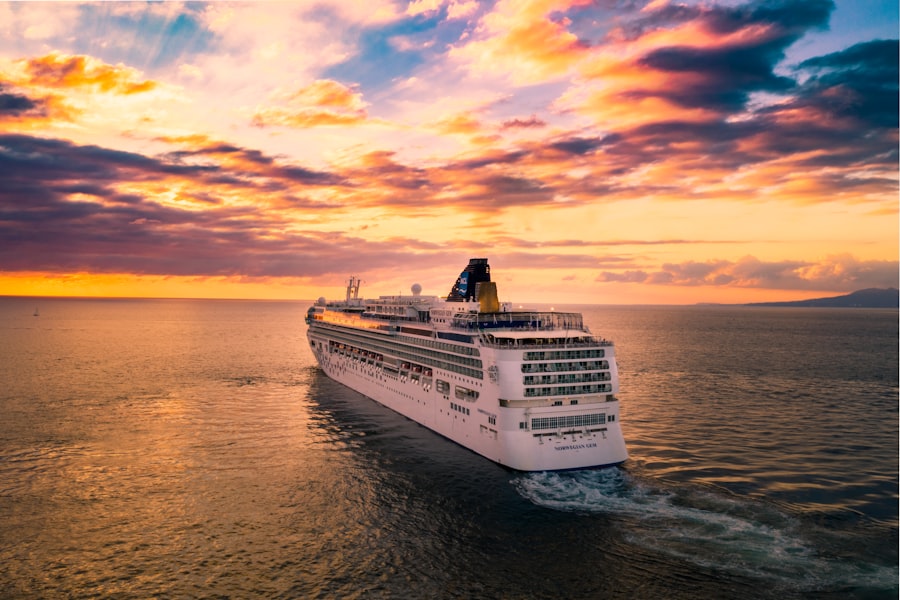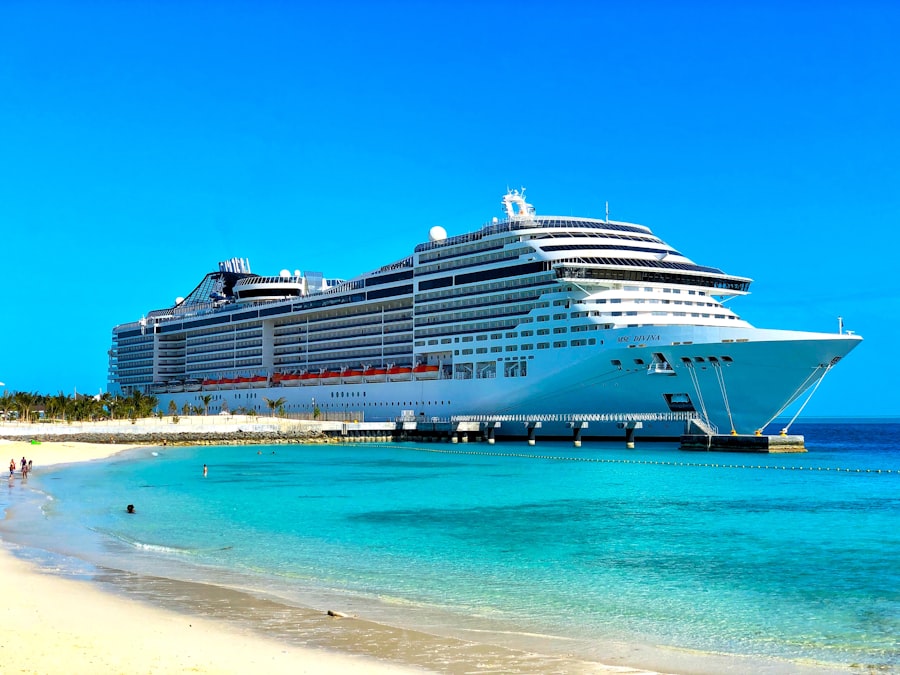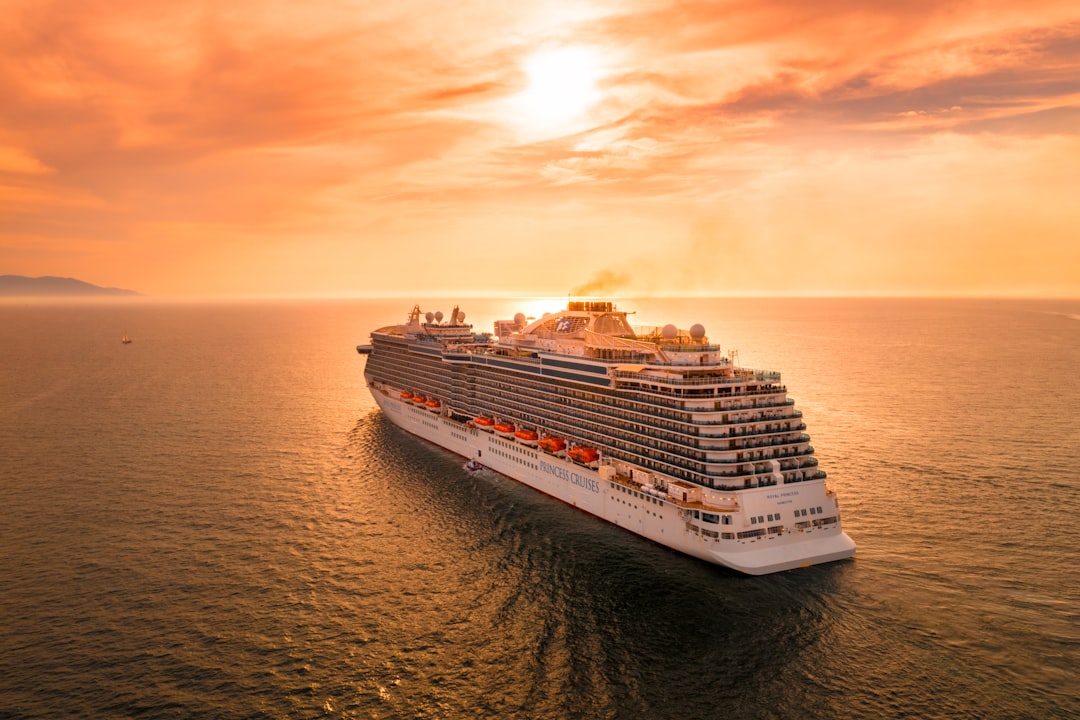The Drake Passage, a body of water that separates South America from Antarctica, is renowned for its tumultuous seas and breathtaking vistas. Stretching approximately 600 miles, this passage is often considered one of the most challenging maritime routes in the world. Named after the English explorer Sir Francis Drake, who navigated these waters in the late 16th century, the Drake Passage serves as a vital conduit for marine life and a gateway for adventurers seeking to explore the icy realms of Antarctica.
Its unpredictable weather patterns and strong currents have earned it a reputation that both intimidates and fascinates travelers. For many, traversing the Drake Passage is not merely a journey; it is a rite of passage that symbolizes the spirit of exploration. The passage connects the Atlantic and Pacific Oceans, making it a crucial area for oceanic circulation and biodiversity.
As vessels navigate through these waters, they are often met with awe-inspiring views of towering icebergs and the vast expanse of the Southern Ocean. The Drake Passage is not just a geographical feature; it embodies the allure of adventure and the call of the wild, drawing explorers from around the globe to experience its unique challenges and beauty.
Key Takeaways
- The Drake Passage is a treacherous body of water located between South America’s Cape Horn and the South Shetland Islands of Antarctica.
- Preparing for the journey across the Drake Passage requires packing appropriate clothing, seasickness medication, and securing travel insurance.
- Safety precautions and protocols are strictly enforced on board to ensure the well-being of passengers, including mandatory safety drills and guidelines for wildlife interaction.
- Activities and entertainment on board include lectures, workshops, and social events to keep passengers engaged during the crossing.
- Wildlife spotting in the Drake Passage offers opportunities to see various species of seabirds, whales, and other marine life in their natural habitat.
Preparing for the Journey
Preparation for a journey across the Drake Passage requires careful planning and consideration. Travelers must first decide on their mode of transportation, with options ranging from large cruise ships to smaller expedition vessels. Each choice comes with its own set of advantages and challenges, influencing the overall experience.
Regardless of the choice, travelers should ensure they are equipped with appropriate gear, including waterproof clothing, sturdy footwear, and essential personal items. In addition to physical preparations, mental readiness is equally important.
The Drake Passage is notorious for its rough seas, and understanding what to expect can help mitigate anxiety. Travelers are encouraged to familiarize themselves with the potential conditions they may encounter, including high winds and choppy waters. Many embark on this journey with a sense of excitement mixed with trepidation, making it essential to cultivate a positive mindset.
Engaging in pre-trip research about the passage’s history, wildlife, and environmental significance can also enhance the overall experience, allowing travelers to appreciate their surroundings more deeply.
Safety Precautions and Protocols

Safety is paramount when navigating the Drake Passage, given its reputation for unpredictable weather and challenging sea conditions. Before embarking on their journey, travelers are briefed on essential safety protocols by their expedition leaders or ship crew. This includes familiarization with emergency procedures, such as life jacket usage and evacuation routes.
Understanding these protocols not only ensures personal safety but also fosters a sense of community among passengers as they prepare to face the elements together. Moreover, modern vessels are equipped with advanced technology designed to enhance safety during transit. GPS navigation systems, radar equipment, and weather forecasting tools play crucial roles in ensuring that ships can navigate through potentially hazardous conditions.
Crew members are trained to respond swiftly to emergencies, and regular drills are conducted to keep everyone prepared. By prioritizing safety measures and adhering to established protocols, travelers can focus on enjoying their journey while feeling secure in their environment.
Activities and Entertainment on board
| Activity | Entertainment |
|---|---|
| Swimming | Pool, Water slides |
| Shows | Theater performances, Live music |
| Sports | Basketball court, Mini-golf |
| Games | Casino, Arcade |
A journey across the Drake Passage offers more than just stunning views; it also presents a variety of activities and entertainment options designed to enrich the experience. Onboard programs often include educational lectures led by experts in marine biology, geology, and history, providing passengers with insights into the unique ecosystem they are traversing. These sessions not only enhance knowledge but also foster a deeper appreciation for the natural wonders surrounding them.
In addition to educational opportunities, many vessels offer recreational activities that cater to diverse interests. Passengers may find themselves participating in photography workshops, yoga classes, or even cooking demonstrations featuring local cuisine. Evening entertainment can range from movie screenings to live music performances, creating a vibrant atmosphere onboard.
These activities serve as a means of relaxation and socialization, allowing travelers to bond over shared experiences as they navigate one of the world’s most iconic maritime routes.
Wildlife Spotting in the Drake Passage
One of the most exhilarating aspects of crossing the Drake Passage is the opportunity for wildlife spotting. The waters are teeming with life, attracting a diverse array of marine species that captivate nature enthusiasts. Passengers may be fortunate enough to witness majestic whales breaching the surface or playful dolphins riding the bow waves of their vessel.
The passage is also home to various seabird species, including albatrosses and petrels, which can often be seen gliding gracefully above the waves. The thrill of wildlife spotting is heightened by knowledgeable guides who accompany travelers on their journey. These experts provide valuable insights into animal behavior and ecology, enhancing the experience for all onboard.
Passengers are encouraged to keep their cameras ready and binoculars at hand as they scan the horizon for signs of life. Each sighting becomes a shared moment of wonder, fostering a sense of connection not only with nature but also among fellow travelers who share in the excitement of these encounters.
Dining and Cuisine Options

Dining aboard vessels traversing the Drake Passage is an experience in itself, offering passengers a chance to savor delicious cuisine while enjoying panoramic views of the surrounding seascape. Most ships provide a range of dining options that cater to various tastes and dietary preferences. From hearty breakfasts featuring local ingredients to elegant dinners showcasing international flavors, meals become an integral part of the journey.
Many vessels emphasize sustainability by sourcing fresh produce and seafood from local suppliers whenever possible. This commitment not only supports regional economies but also aligns with environmentally conscious practices that resonate with travelers seeking responsible tourism experiences. Passengers may find themselves indulging in dishes inspired by Antarctic cuisine or enjoying themed dinners that celebrate different cultures along their route.
Weather and Sea Conditions
The weather conditions in the Drake Passage can be notoriously unpredictable, often changing rapidly within short periods. Travelers should be prepared for a range of weather scenarios, from calm seas under clear skies to turbulent waters accompanied by rain or snow. Understanding these conditions is crucial for ensuring comfort during the journey.
Packing layers of clothing that can be easily added or removed allows passengers to adapt to fluctuating temperatures. Sea conditions can also vary significantly depending on the time of year and prevailing weather patterns. The summer months typically offer milder conditions, making them popular for expeditions; however, even during this period, travelers should remain vigilant about potential rough seas.
The experience of navigating through challenging waters can be both exhilarating and daunting, but it is essential for passengers to embrace the unpredictability as part of their adventure.
Historical and Geographic Significance of the Drake Passage
The Drake Passage holds immense historical and geographic significance that extends beyond its challenging waters. Historically, it has served as a critical route for explorers seeking to chart new territories during the Age of Exploration. Sir Francis Drake’s voyages in the late 1500s paved the way for future expeditions to Antarctica and beyond, marking this passage as a pivotal point in maritime history.
Geographically, the Drake Passage plays a vital role in global ocean circulation patterns. It acts as a conduit for cold Antarctic waters to flow northward while allowing warmer waters from the Atlantic Ocean to mix with those from the Pacific. This unique interaction contributes to climate regulation and influences weather patterns across continents.
Understanding this significance enhances travelers’ appreciation for their journey through these storied waters.
Navigational Challenges and Expertise
Navigating through the Drake Passage presents unique challenges that require skilled expertise from crew members aboard vessels traversing its waters. The combination of strong currents, shifting winds, and unpredictable weather demands constant vigilance from navigators who must make real-time decisions to ensure safe passage. Experienced captains utilize advanced navigational tools alongside their knowledge of local conditions to chart courses that minimize risks while maximizing passenger comfort.
Moreover, crew members undergo rigorous training to prepare for potential emergencies that may arise during transit through these challenging waters. Their expertise extends beyond navigation; they are well-versed in handling various situations that may occur at sea, from mechanical issues to medical emergencies. This level of preparedness instills confidence in passengers as they embark on their journey across one of the world’s most formidable maritime routes.
Tips for a Smooth Sailing Experience
To ensure a smooth sailing experience across the Drake Passage, travelers can benefit from several practical tips that enhance comfort and enjoyment during their journey. First and foremost, staying hydrated is essential; drinking plenty of water helps combat seasickness and keeps energy levels up during long days at sea. Additionally, packing motion sickness remedies can provide peace of mind for those prone to discomfort in turbulent waters.
Engaging with fellow passengers can also enrich the experience significantly. Sharing stories and experiences fosters camaraderie among travelers who are united by their adventurous spirit. Participating in onboard activities or excursions allows individuals to connect over shared interests while creating lasting memories together.
Lastly, maintaining an open mind about unexpected changes in plans or weather conditions can lead to delightful surprises along the way.
Conclusion and Reflections on the Journey
As travelers reflect on their journey across the Drake Passage, they often find themselves filled with a sense of accomplishment and wonder at having navigated such an iconic maritime route. The challenges faced during transit become cherished memories that contribute to personal growth and resilience. The breathtaking landscapes encountered along the way serve as reminders of nature’s grandeur and power.
Ultimately, crossing the Drake Passage is more than just a physical journey; it represents an exploration of both external landscapes and internal landscapes within oneself. The experiences gained—whether through wildlife encounters, shared meals with fellow adventurers, or moments spent marveling at nature’s beauty—become integral parts of each traveler’s story. As they return home, they carry with them not only memories but also a renewed appreciation for exploration and adventure in all its forms.
If you’re planning a journey through the Drake Passage with Princess Cruises, you might find it interesting to explore more about the geographical and historical significance of this iconic waterway. An article on MyGeoQuest delves into the challenges and wonders of navigating the Drake Passage, offering insights into what makes this route both daunting and exhilarating for travelers. For more detailed information, you can read the related article on their website by following this link: MyGeoQuest. This resource provides a comprehensive overview of the passage, including tips for travelers and historical anecdotes that enrich the cruising experience.
WATCH NOW! Drake Passage: Earth’s Deadliest Waters Revealed
FAQs
What is the Drake Passage?
The Drake Passage is the body of water between the southern tip of South America and the northern tip of the Antarctic Peninsula. It is known for its rough seas and challenging sailing conditions.
What is a Princess Cruise?
Princess Cruises is a cruise line that offers a variety of itineraries to destinations around the world, including the Drake Passage.
What is the experience like on a Princess Cruise through the Drake Passage?
Cruising through the Drake Passage can be a thrilling and adventurous experience, as passengers have the opportunity to witness stunning scenery and wildlife while crossing one of the most iconic and challenging bodies of water in the world.
What should I pack for a Princess Cruise through the Drake Passage?
It is recommended to pack warm clothing, including waterproof outerwear, as the weather in the Drake Passage can be unpredictable and cold. Additionally, binoculars and a camera are essential for capturing the breathtaking views and wildlife sightings.
Are there any specific safety measures in place for cruising through the Drake Passage with Princess Cruises?
Princess Cruises adheres to strict safety protocols and has experienced crew members who are trained to navigate through challenging waters like the Drake Passage. Passengers are briefed on safety procedures and are encouraged to follow all guidelines while at sea.
